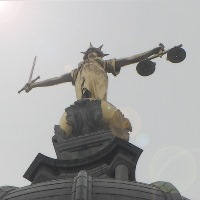The 1919 Major League Baseball season pitted the Chicago White Sox against the Cincinnati Reds in an eight game matchup. Chicago, who had won the 1917 World Series championship 4 games to 2 over the New York Giants, were heavily favored to win the Series. The Reds, champions of the National League, were making their very first appearance in the fall classic.
The game began in odd fashion, which should have raised some suspicion that it was fixed. Ace right-hander Eddie Cicotte, master of the knuckleball with 209 career wins and a lifetime earned run average of 2.38, beaned Reds second baseman Morrie Rath. Hitting Rath, a journeyman player who spent six seasons in the majors, including the 1912 and 1913 seasons with the Chicago White Sox, was a signal to gamblers that the outcome of the game was fixed. Cicotte would later admit his role in the scheme along with seven of his teammates in what became the most disgraceful cheating scandal of all time.
The Series
Cincinnati jumped out to a two-game lead, taking Games 1 and 2 by scores of 9-1 and 4-2, both games being played in Cincinnati. Chicago recovered in Game 3 with a strong pitching performance from pitcher Dickey Kerr, who pitched a 3-hit shutout. The New York Times remarked of Kerr’s performance, “Instead of a wild lefthander shaking with stage fright in the face of the Redland troupe (during Game 3), Kerr looked them over with nerves of chilled steel.” Kerr was not one of the conspirators and went on to win an important Game 6 to keep the White Sox in the series.
Unfortunately for the White Sox, Cicotte gave Game 4 to the Reds, 2-0. Cicotte committed several bewildering errors in the field that accounted for the Reds’ two runs. Outfielder “Shoeless” Joe Jackson failed to connect on any pitches thrown by Reds starter Jimmy Ring. Jackson, who was also implicated as one of the scandal’s conspirators, accounted for a quarter of the team’s runs in the Series (5) and one-fifth of the hits (12), finishing 12 for 32 and an average of 0.375. The White Sox team, however, went an astonishing 59 for 263 in the Series and finished with a batting average of 0.224, eventually succumbing to the Reds 10-5 in Game 8 played October 9, 1919, in Chicago’s Comiskey Park.
The Truth Comes to Light
It would be nearly a year before the roles of the eight players who conspired with gamblers to fix the 1919 World Series would be exposed. The story of the scandal was confirmed by pitcher Eddie Cicotte, and affirmed by the other participants, Charles Risberg, Fred McMullin, Jackson, Oscar Felsch, George Weaver, Claude Williams, and Chick Gandil. Gandil would admit in a 1956 Sport Illustrated interview that he was in fact the ringleader who recruited the others to throw the Series. After admitting their role in the scandal (all but Gandil), White Sox owner Charles Comiskey suspended the players on September 28, 1920.
The Outcome
Judge Kenesaw Mountain Landis would be named baseball commissioner in 1921 and on March 12 of that year, prior to an August trial of the so-called “Black Sox” eight, which led to the acquittal of the former players on all counts, promptly banned them from the league. Players like Cicotte and Jackson would never again don a Major League Baseball uniform.
Byline
Along with controversial topics in sports history, Jay Vincent enjoys writing about sports statistics, sports science, sports memorabilia, bobble heads (such as those at CustomBobbleheads.com) and other neat topics.
No related posts.

